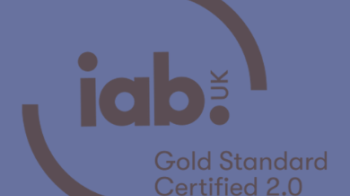Where are we on programmatic transparency?
Jeff Meglio, VP Agency Partnerships at Sovrn
It’s been more than two years since Marc Pritchard infamously called out the ‘murky’ programmatic media supply chain.
Following P&G’s lead, brands and advertisers began paying more attention to where their programmatic budgets were going. They wanted to understand how much of every dollar spent actually got in front of the consumer. There was a feeling that businesses throughout the ad tech ecosystem were unnecessarily obscure about their business models, and that everyone had a hand in the pot. A WFA report revealed only 14% of advertisers had a good understanding of the proportion of their programmatic budget that reached the consumer, and various attempts were made to quantify the issue. In 2017, Warc calculated that around 55% of programmatic ad spend goes to the so called ‘tech tax.’
On the road to transparency
One step which the ad tech industry has taken towards programmatic transparency has been to respond to brand demands. Last year, a number of exchanges, including Sovrn, wrote an open letter to advertisers and publishers committing to a set of Marketplace Principles to promote clarity, trust, and transparency in the programmatic marketplace. These include explicit fee arrangements with no hidden charges, a fully auditable supply chain, transparent change notification, and the absence of undisclosed business arrangements (such as kickbacks or rebates) and biased auction mechanics. These principles, which include others relating to efficiency, are being integrated into Trustworthy Accountability Group (TAG) compliance and accountability certifications.
Brand demand for transparency is pushing ad tech providers to focus on communicating the value they add to the programmatic process. Many SSPs have made considerable investments in their technology and continue to do so to ensure their infrastructure is up to the task of programmatic, and that their trained experts get the best results for client campaigns. Those initiatives aren’t free—and all businesses need to make a profit—but the bottom line is that the exchange needs to be transparent about the charges they levy, their purpose, and the value of the services they deliver for that fee, rather than burying them with the cost of the inventory and the total campaign budget. For instance, via the bid request, an exchange may provide access to valuable inventory and engaged audiences that would be inaccessible to the brand without the specific contribution of that exchange, so they need to articulate this value.
To help advertisers comprehend the contribution of different companies within the digital supply chain and understand the ROI on their advertising budget, IAB UK recently launched a tool known as Transparency FAQS. The tool features 20 questions that brands and agencies can ask digital advertising companies to discover more about their business models and the value they add, covering the three key areas of pricing, placement, and data usage.
Advertisers can keep pushing
While significant progress is underway to increase transparency in the programmatic supply chain, brands and agencies—who are themselves compelled to be more transparent in their fee structures—can still accelerate this process. By having in-depth conversations with potential partners and asking the right questions, they can ensure they are only spending with those partners committed to transparency.
Advertisers can ask whether exchanges have arrangements in place where they give particular DSPs a rebate. They can ask whether there is any bias towards one auction or another. They can ask whether it is possible for an exchange to expose its full take rate. Advertisers can also look for partners with certifications that demonstrate a commitment to transparency, such as the TAG Platinum accreditation.
This approach will inevitably bring success for well-lit providers who are open and honest about their fees and arrangements, and are adding true value to the programmatic process. At the same time, those depending on shady auction dynamics, hidden fees, or undisclosed arrangements that direct spend away from fair market principles will be excluded from the programmatic ecosystem. Programmatic transparency might not yet be universal, but the industry is on the right path to the ‘transparent, clean and productive media supply chain’ that Marc Pritchard called for.
Related content
FAQs: Find out more about getting Gold Standard certified
Learn moreIAB Tech Lab launches Supply Chain Validation service for publishers
Learn more5 things we learnt at Digital Trust Forum 2021
Learn moreDigital Trust Forum returns to tackle key issues
Learn more
Fast forward to 2030 with Futurescape
An in-depth exploration of the attitudes, innovations and media shifts that will shape the years ahead and redefine how we advertise by the turn of the decade



